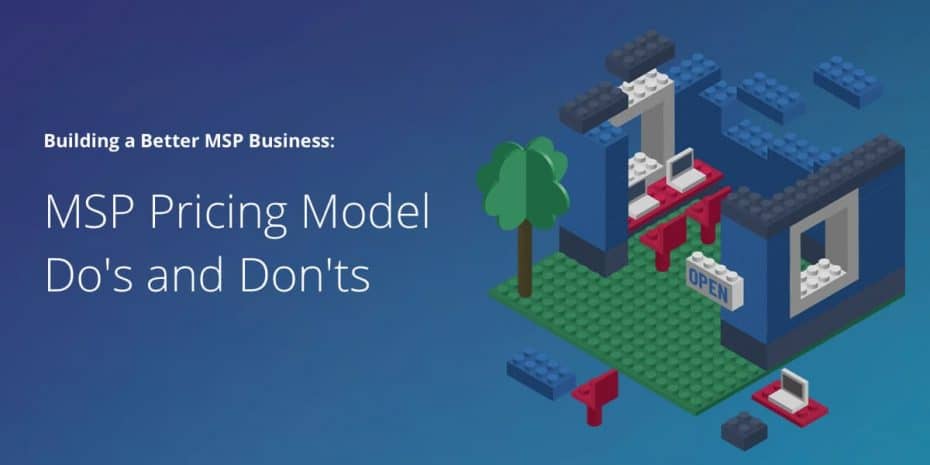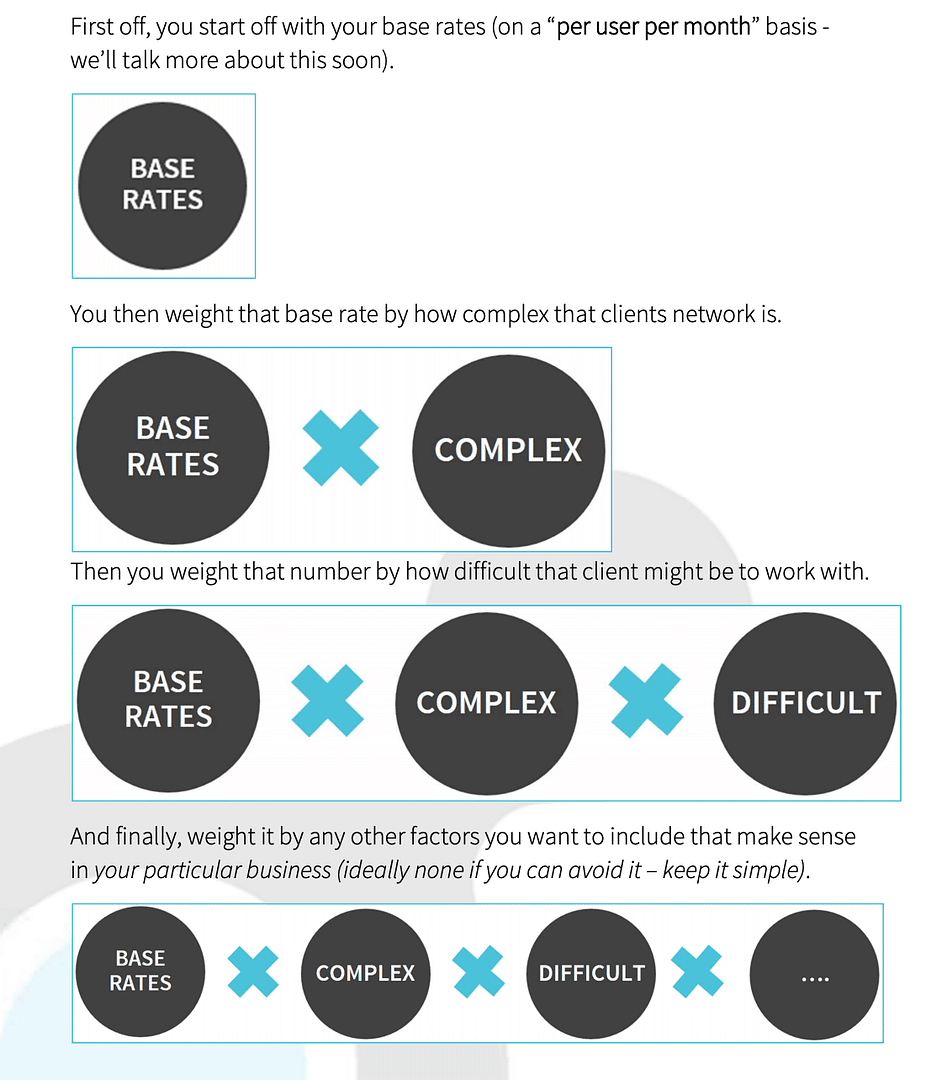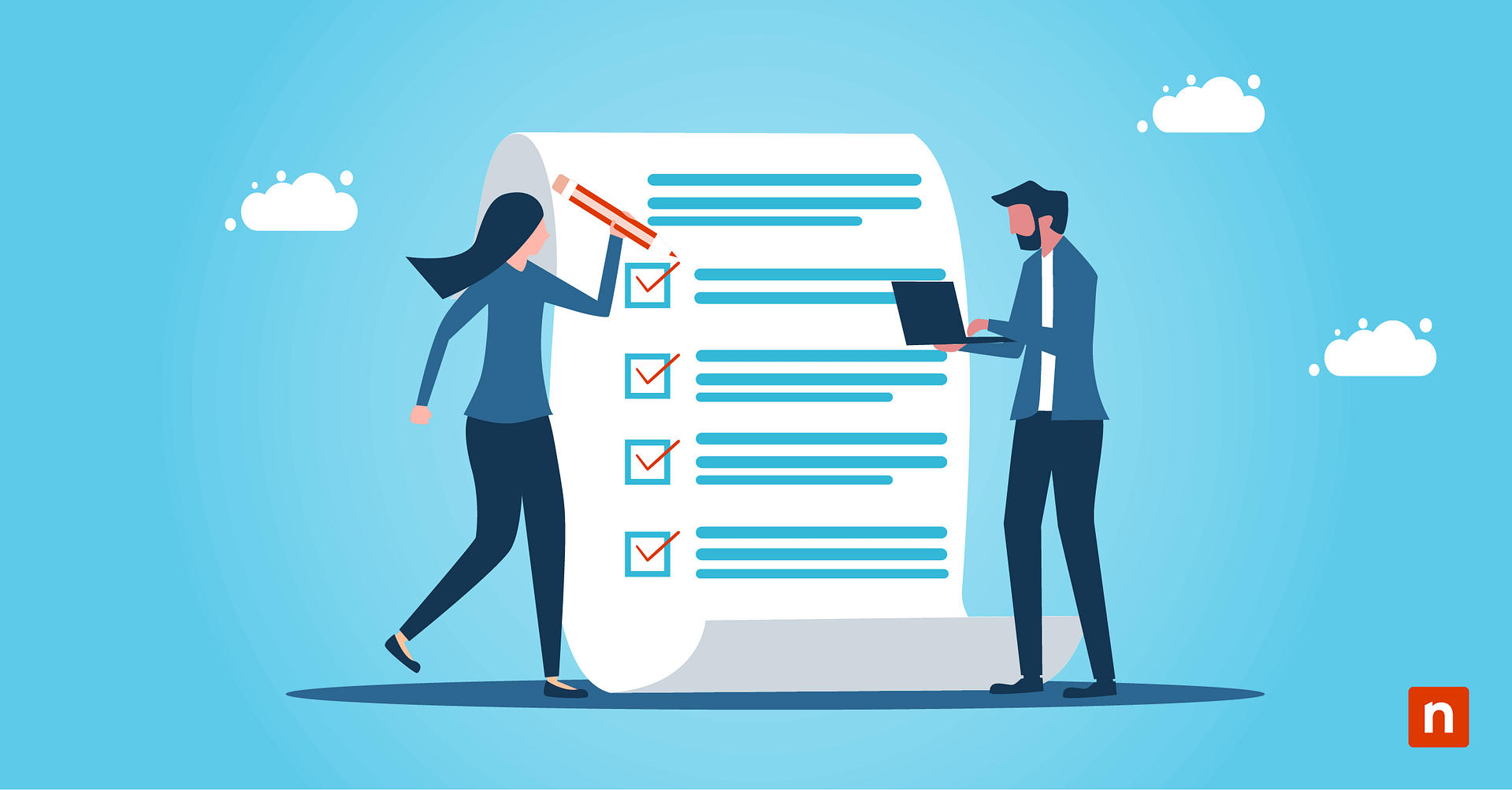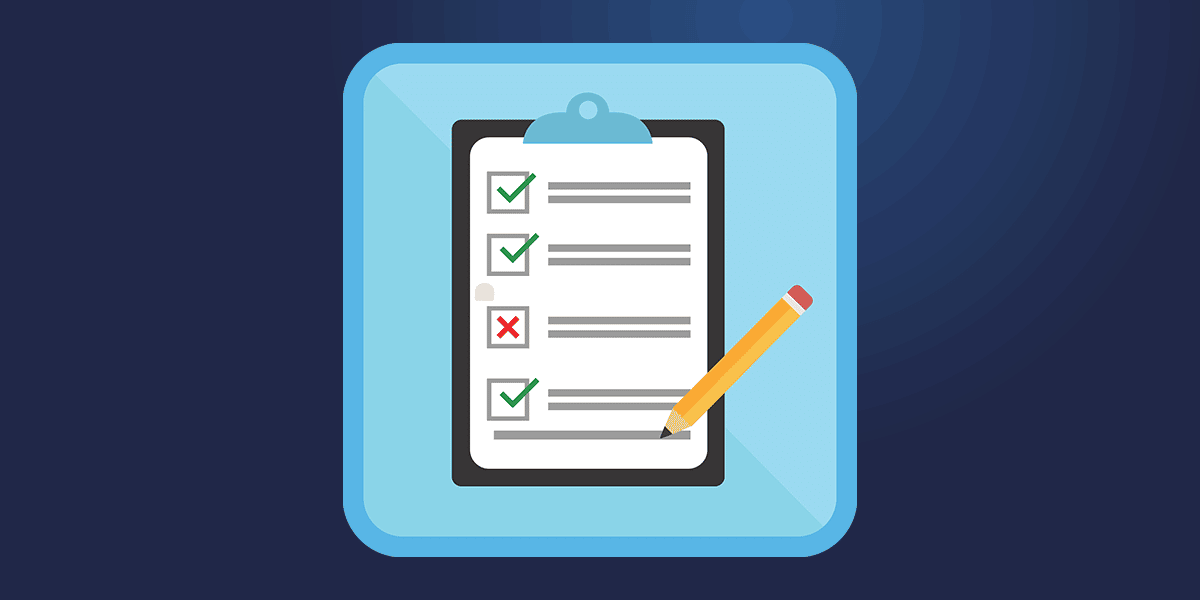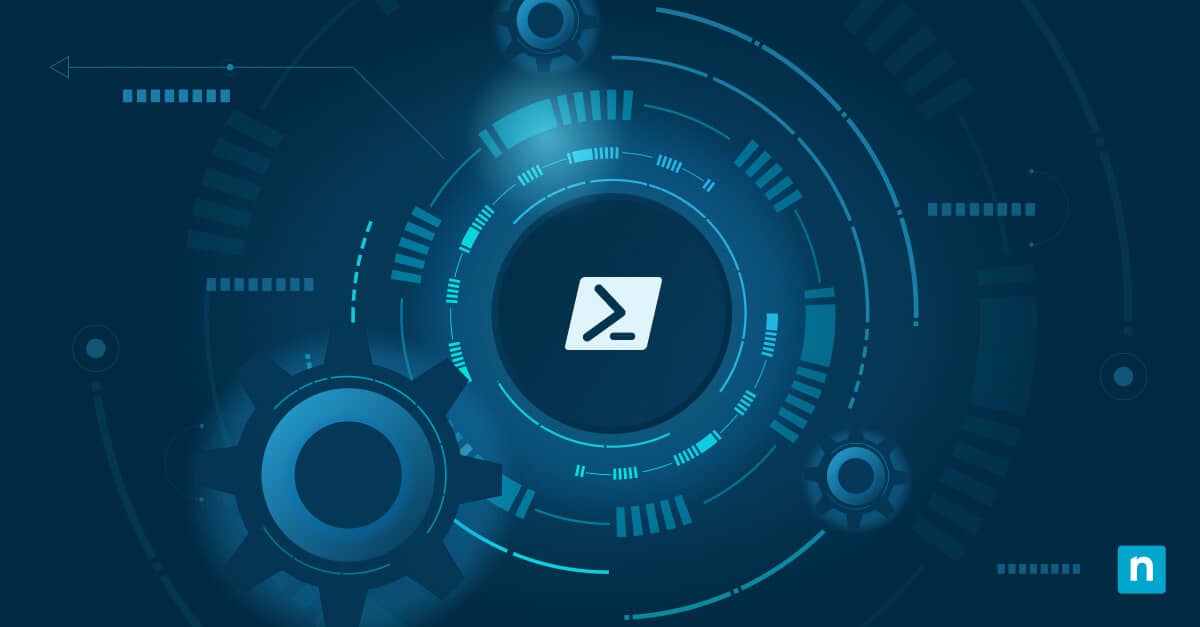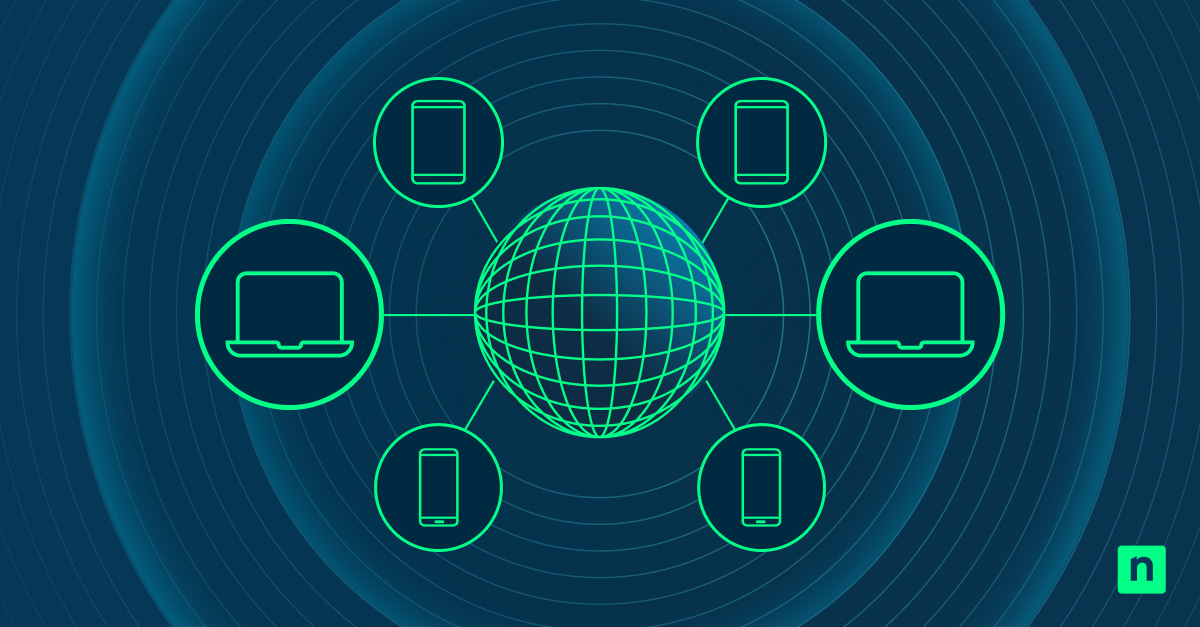Note: The following is an excerpt from The Break/Fix to Managed Services Transition Kit, which includes a 4-step action plan for making the switch to managed services along with bonus templates and tools you can use to get started right away.
Managed services pricing strategy is a complex topic. There’s no single right way of doing things. It really all depends on factors that are unique to each provider and their clientele. A single blog post is only going to scratch the surface, so let’s keep things simple by hitting some basics. Then I’ll point you to a resource that goes into more depth that you can use to get into the nuts and bolts of your MSP pricing.
MSP pricing metrics 101 (and the dangers of relying too much on benchmarks)
The stakes for getting your pricing right are obviously high. Miss the mark and all the hard work you put into launching your offering will eventually be for naught if your business isn’t profitable. To know what you should be charging here are a few basic terms and concepts you need to understand first:
- Cost of Goods Sold (COGS): Also referred to as Cost of Services, this number should reflect all the direct costs associated with you providing your service, including software licensing fees, labor, and other expenses.
- Monthly recurring revenue (MRR): All in the name — this is the revenue your fixed-fee services are generating on a monthly basis.
- All-in seat price (AISP): MRR divided by the number of users supported. Ex: If a 20-seat client is generating $3,000 in MRR, the AISP is $150.
- Gross margin: The percentage of every dollar of MRR you actually get to keep/apply to your fixed overhead (operating expenses). This is critical to determining your breakeven point.
At the risk of obviously oversimplifying, effective pricing essentially boils down to knowing your COGS and charging enough to ensure the resulting MRR is at least 2x those direct costs and then some. The ballpark figure for the desired margin is 50% or greater, with some MSPs shooting for as high as 70%.
While it’s tempting to look to benchmarks for guidance, it’s only so helpful to know MSPs on average charge between $125 – $200 per user per month. You really need your pricing to be based on your costs and the margins you need to hit in order to be profitable, not based on what other people are doing.
Need help breaking down your true COGS? MSPexchange provides a fantastic MSP Margin Calculator that will walk you through calculating your costs, margins, and pricing based on a flat fee, per-user model.
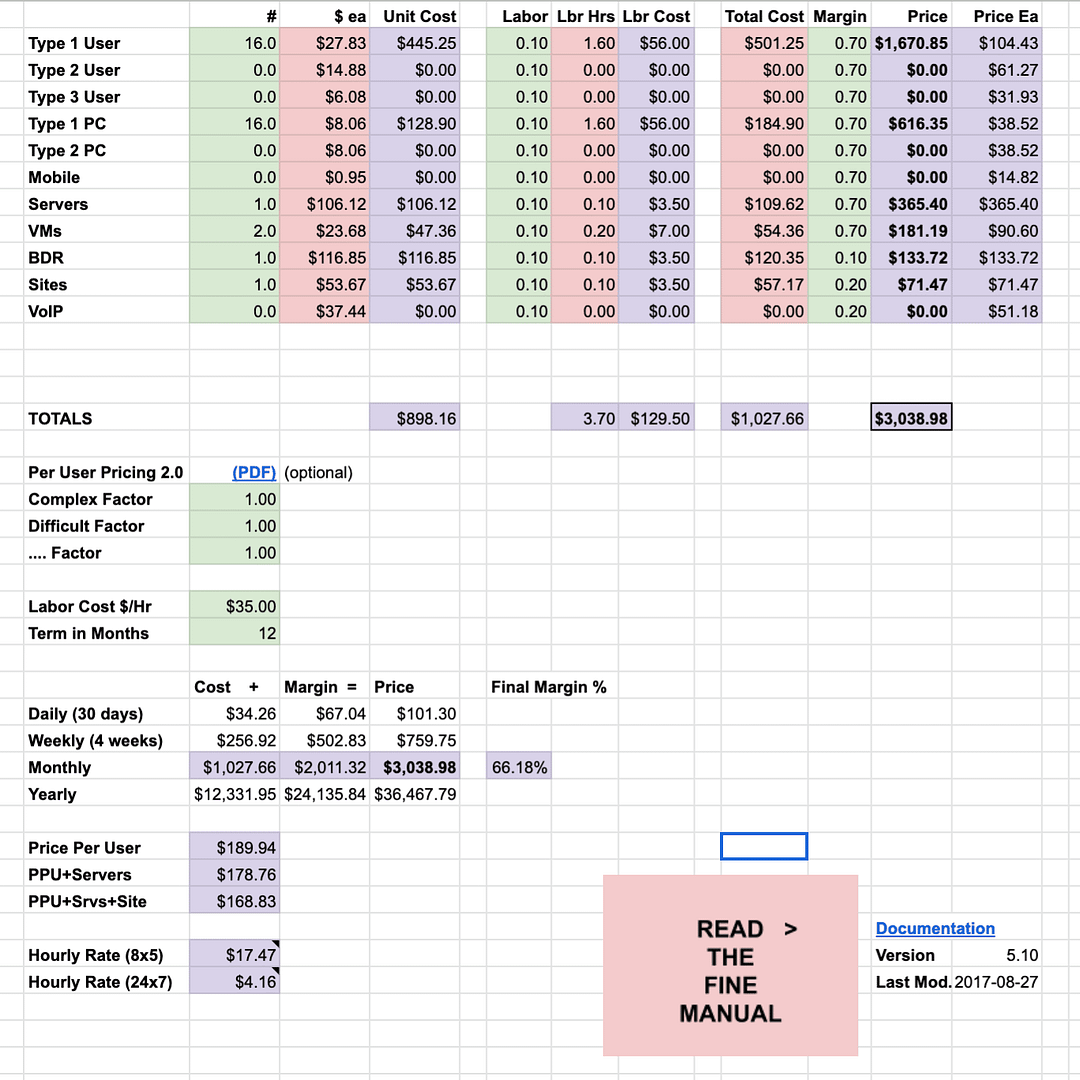
The MSP Margin Calculator | Source: MSPexchange
Should you go all-in on AYCE?
As we’ve previously covered, while many MSPs utilize tiered or a la carte pricing structures to provide their customers with a number of offering packages to choose from, there are clear benefits to developing one flat, standardized offering, instead. Not only does it keep things simple, it also allows you to fully commit and laser-focus your positioning.
As with any pricing model, there are certainly challenges and potential pitfalls with AYCE pricing. One common mistake is not getting crystal clear upfront about exceptions, meaning the things that aren’t covered. That said, flat pricing models continue to gain adoption, and for good reason. If you have the proper tools and structure to do AYCE right it can be very profitable.
If, on the other hand, you’re set on exploring tiered and a la carte approaches, you can find good advice on those models here.
Per user or per device pricing — which should you use?
Assuming you’re going with flat-rate pricing, another decision you need to make is whether you want to specify your rate per user or per device. To be clear, you don’t have to specify either one. You can also simply stick to quoting customers one fixed monthly fee. Letting clients know their pricing is based on user or device count can have upsides and downsides. On one hand, it can anchor your pricing in clear terms clients understand. On the other hand, it can make you very sensitive to downsizing and other organizational changes.
While per-device pricing gained traction in the early days of managed services adoption, per-user pricing has since been gaining ground in popularity. For one thing, it’s less complicated (no setting different prices for different types of devices or arguing with a client why VMs count), but there’s also something nice and advantageous about focusing your offering on supporting people, not devices.
That said, no one user is alike, and some experts argue that before you establish your pricing you should get a more granular sense of your actual costs first.
To do that, the creators of the MSP Margin Calculator (referenced above) recommend dividing users into cohorts based on their needs and how much effort it’s going to take to service them. Ex: One client may have full-time users who need your standard package, part-time users who only need email, executives who need special treatment, etc. The cost of the services you provide to each of those groups is going to be different, so each will have a different impact on your margins. The margin calculator helps you surface those costs, so you can price your flat rate more effectively.
Of course, then there are the more intangible factors, like how much of a pain a particular type of user is to deal with. To include that in pricing considerations, MSP consultant Nigel Moore recommends weighting those factors with a model he refers to as “Per user 2.0” (again, the MSP Margin Calculator can walk you through actual implementation).
The above is from Moore’s must-read guide, A (Stupidly) Simple Method to Pricing MSP Agreements Easily and Profitably. You can also learn more from Moore at his site, The Tech Tribe.
Key pricing do’s and don’ts
In closing:
- DO require pre-paid billing. Otherwise, you’re going to find yourself chasing payments and missing out on the value of predictable MRR on cash flow which was one of the big reasons you switched to managed services in the first place.
- DON’T feel obligated to offer everyone the same price. One flat fee doesn’t mean one price for all. Your rate should be based on your costs of providing services, and needy clients should be charged more.
- DO give yourself a cushion by shooting for higher margins. Unexpected costs are almost always a given. Protect yourself by aiming for 60% or 70% and remind yourself it’s easier to try to achieve that up front rather than trying to go back and raise prices. That said…
- DON’T be afraid to raise prices. One of the most common mistakes experts say they see MSPs making is not charging enough for their services. When MSPs talk about raising prices it almost always ends with them saying they lost almost no customers and they wish they’d been confident enough to do it sooner.
- DO have a minimum fee. Otherwise, in many cases, you just won’t be profitable with small clients.
- DON’T get too hung up on what others are doing. Sell customers on the overall value you provide.
New to managed services or looking to get more efficient and profitable?
You can find more actionable advice in our free Break/Fix to Managed Services Transition Kit. It provides a 4-step action plan you can follow to get your shop in order PLUS additional free templates and tools you can start using today.

